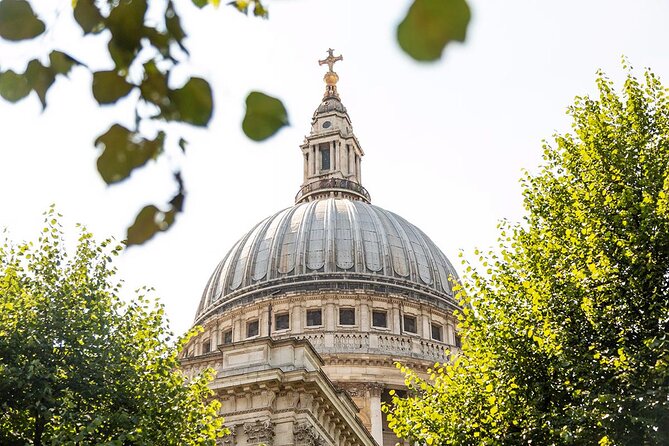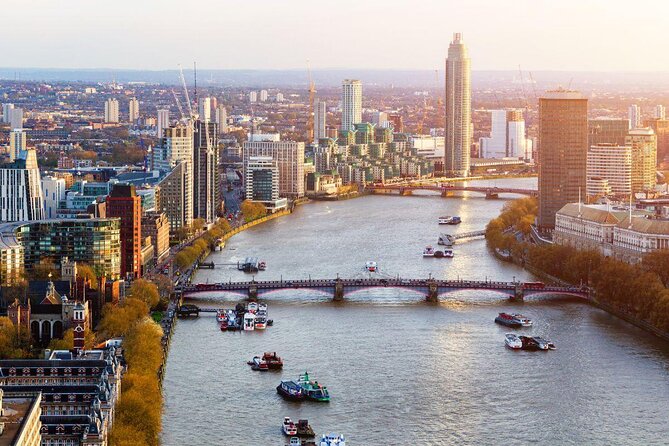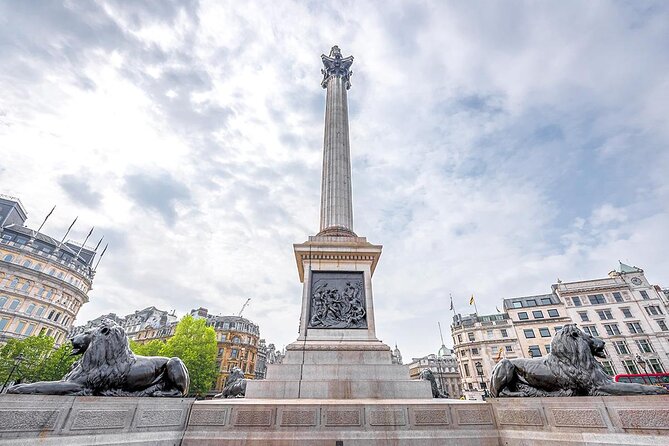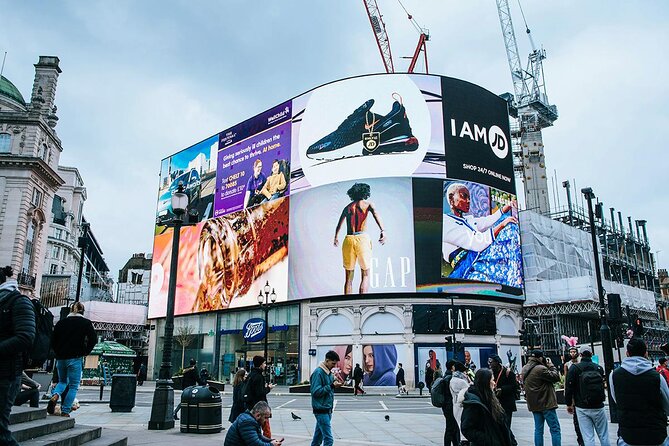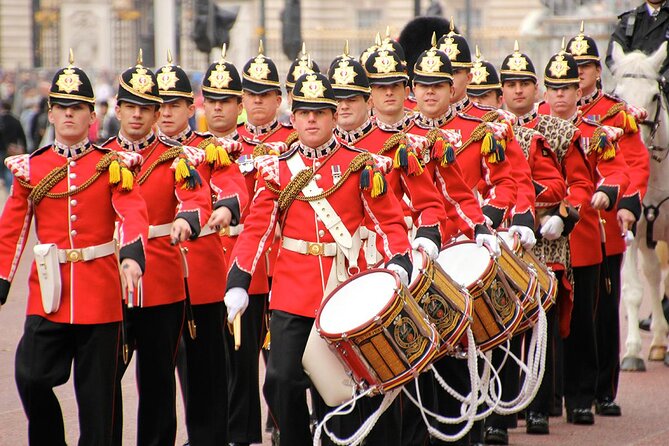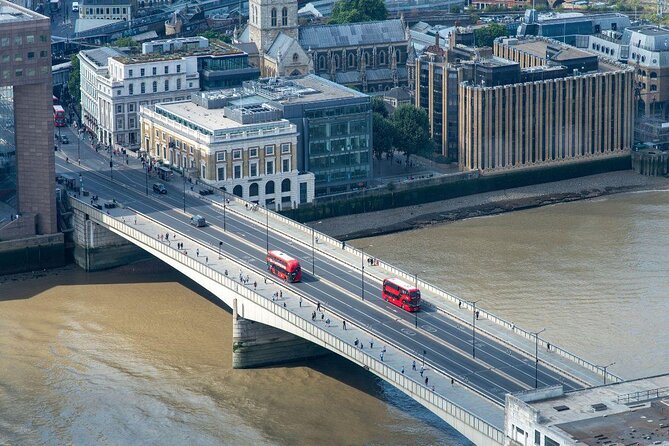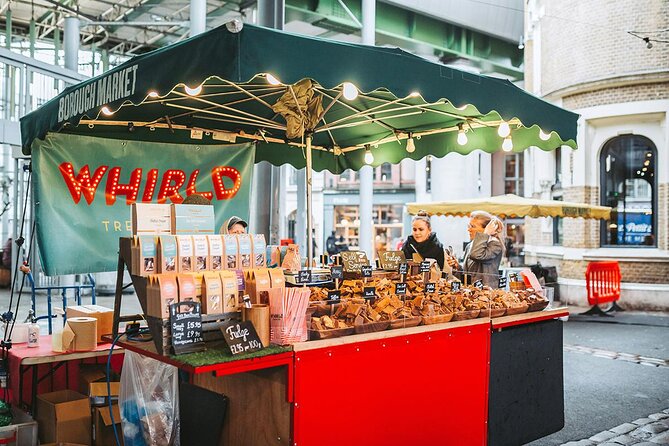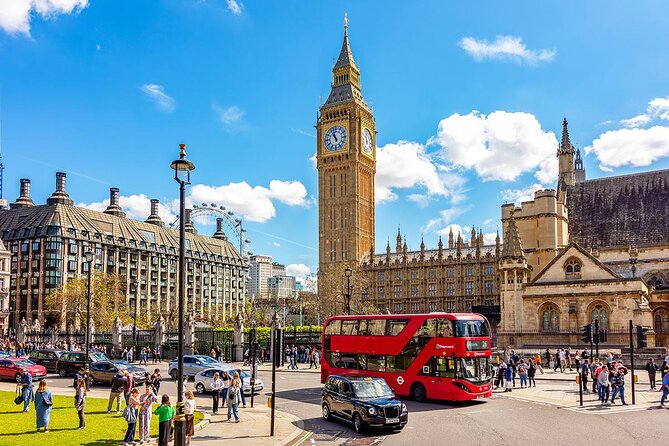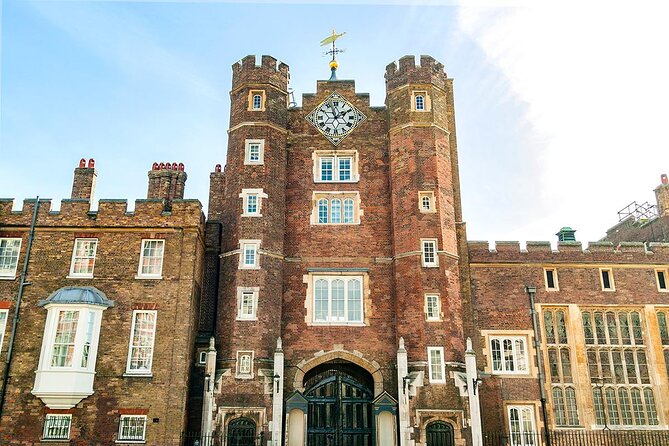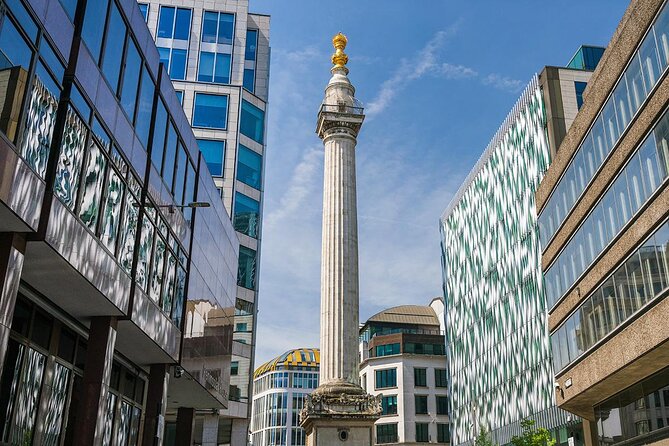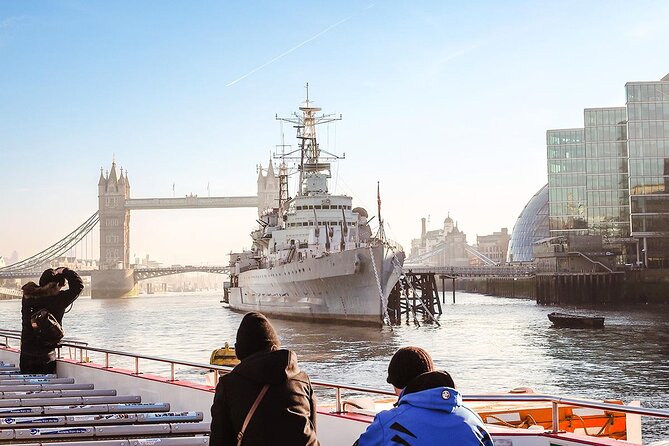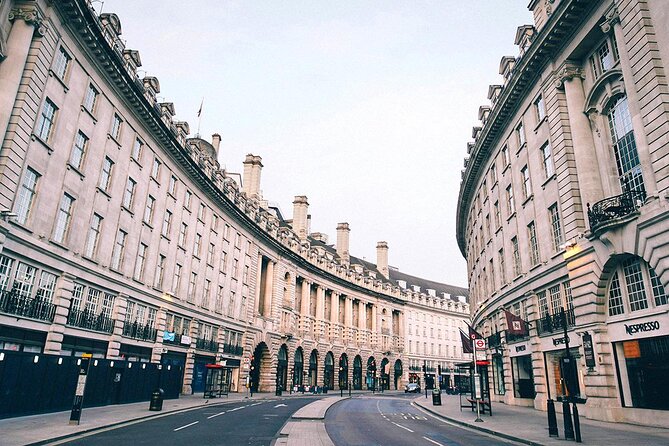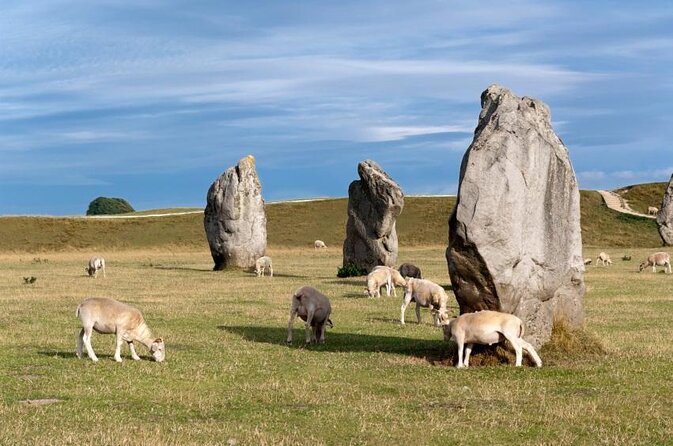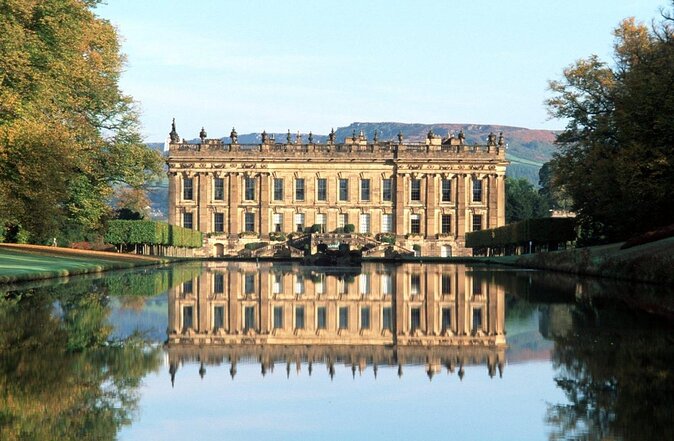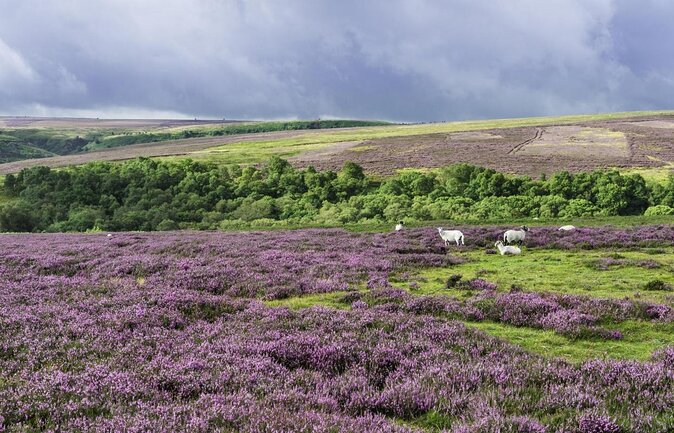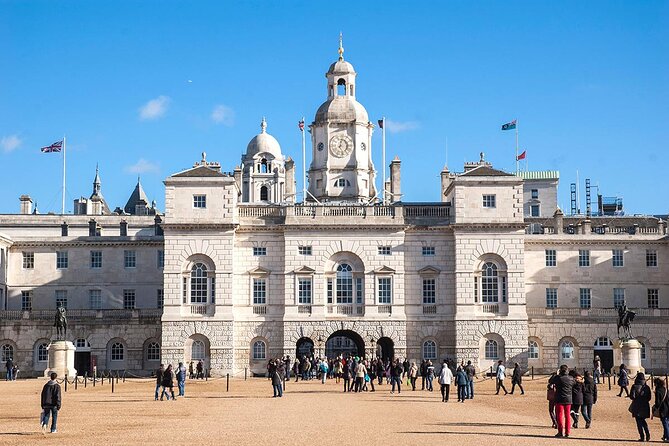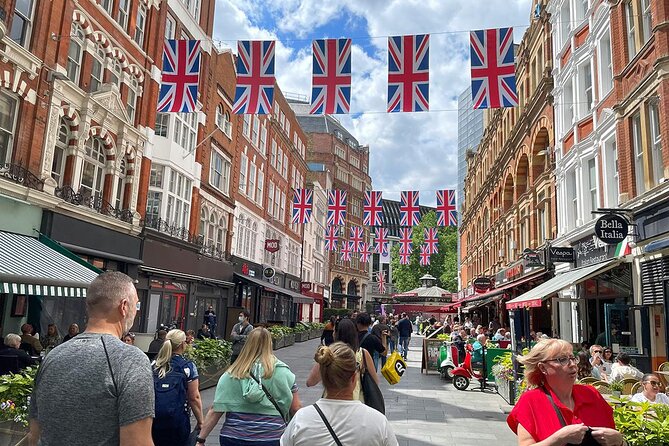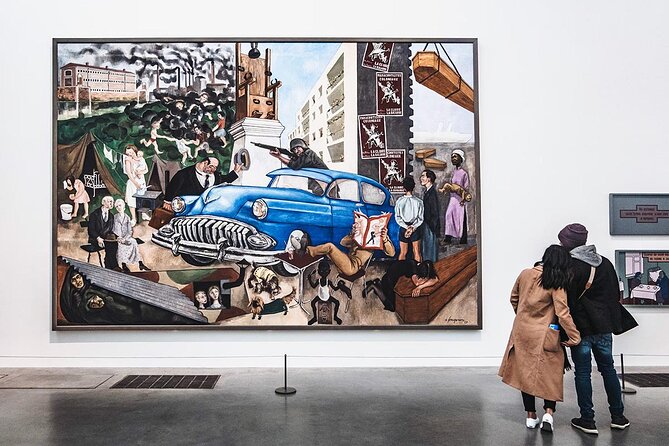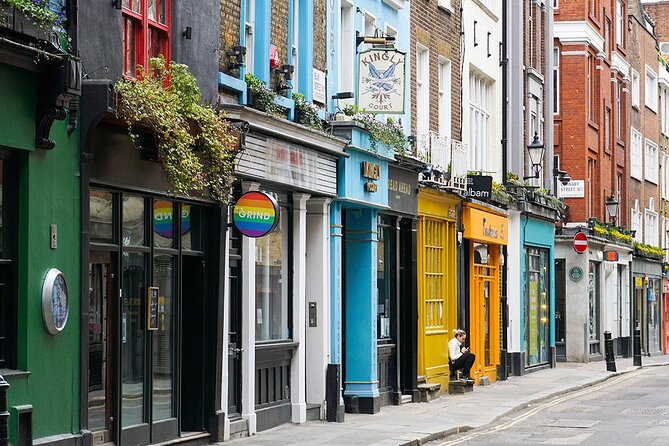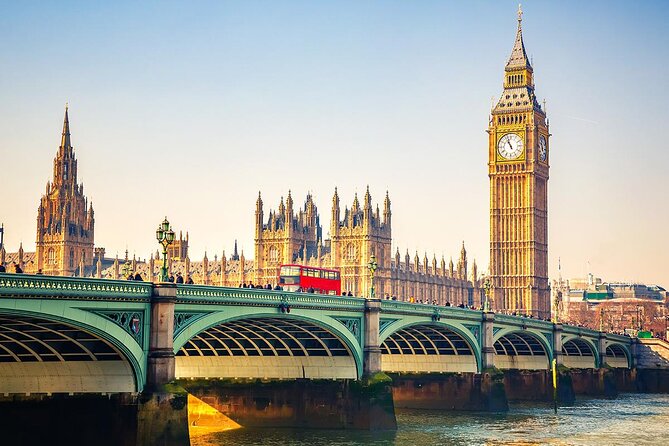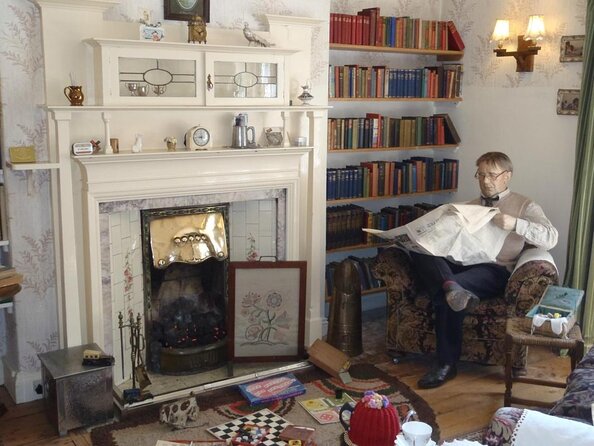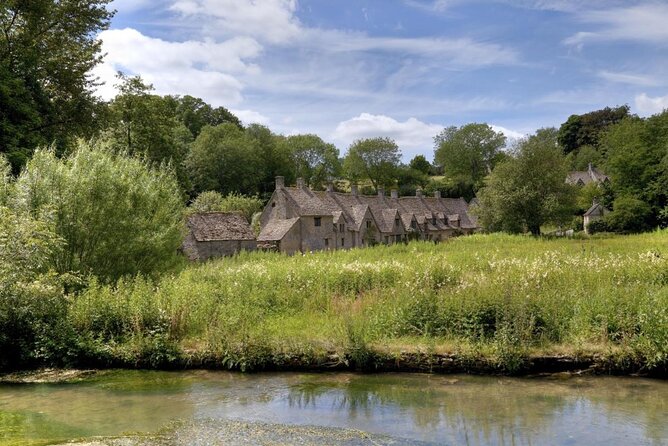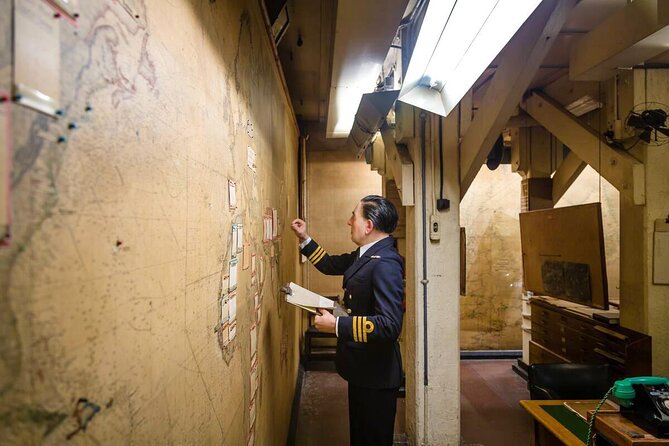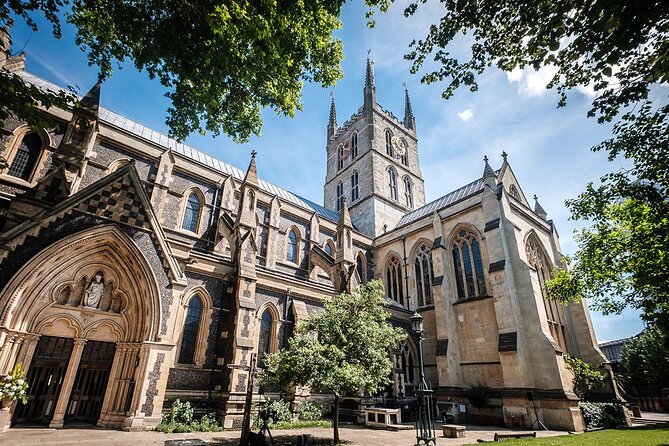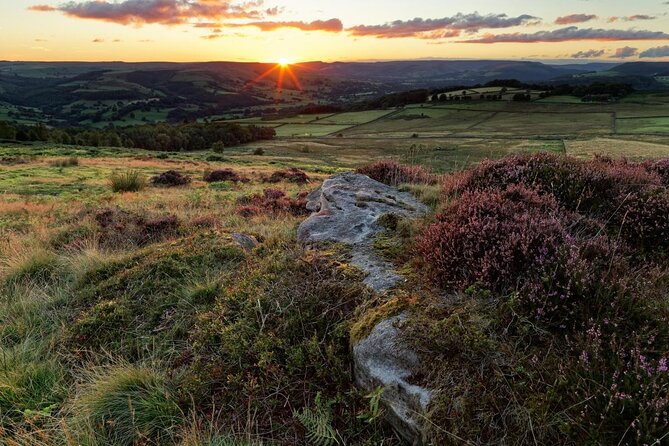Big Ben Tours and Tickets
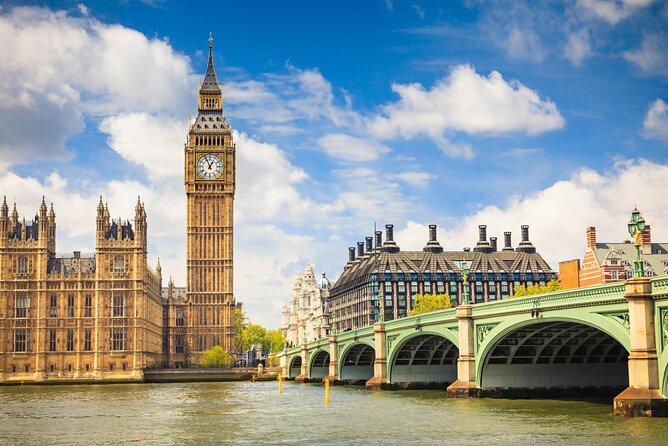
Few landmarks epitomize central London as perfectly as Big Ben, the iconic clock tower of https://www.viator.com/en-GB/London-attractions/Houses-of-Parliament-and-Big-Ben/d737-a1395 the Houses of Parliament that’s officially known as Elizabeth Tower, after the late Queen Elizabeth II. Big Ben, heralding Great Britain’s political heart in Westminster, stands as the striking centerpiece of the Thames waterfront. It towers over the Palace of Westminster, which houses the Houses of Parliament.
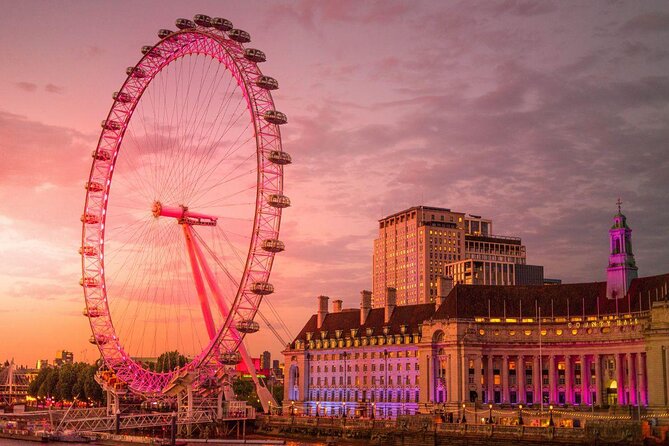
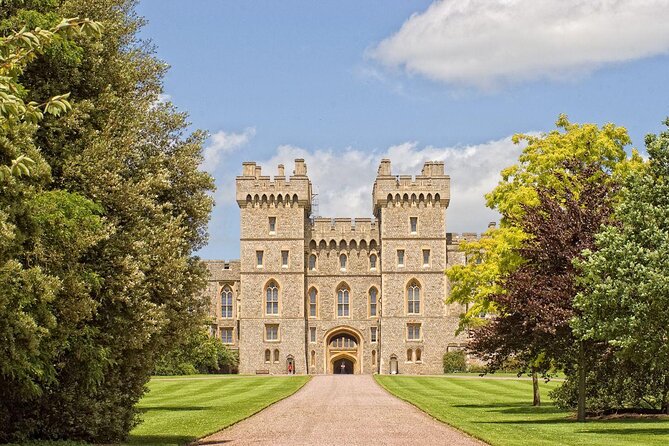
An architectural masterpiece with a magnificent dome, St. Paul’s Cathedral is one of London’smost recognizable sites. The 17th-century cathedral boasts a rich history as host of the jubilee celebrations of the late Queen Victoria and Queen Elizabeth II, the marriage of Prince Charles and Princess Diana, and the funeral of Sir Winston Churchill.
With its Gothic towers and central bascule flanked by dramatic suspension bridges, Tower Bridge is both a remarkable feat of engineering and one of the most recognizable of London’s landmarks. The famous bridge is a popular subject of London postcards, leading many to mistake it for London Bridge, which is actually the next bridge upstream.
Trafalgar Square—the living, breathing, and beating heart of London’s West End—plays an integral part in local life as a site of celebrations, protests, performances, parades, and public gatherings. Overlooked by grand, stately buildings such as the National Gallery and St. Martin-in-the-Fields Church, this vast square is dotted with iconic fountains and statuary. Most famous among them is the 144-foot (44-meter) Nelson’s Column, which commemorates a British naval victory over France and Spain, and is guarded by four oversized bronze lions.
Piercing the sky like a gigantic shard of glass, the London Shard is a spectacular sight. This architectural wonder, designed by Renzo Piano, is not only one of the city’s most iconic structures—it also boasts the highest observation deck in London.
Famous for its giant illuminated screens and near-constant stream of traffic, Piccadilly Circus in London’s West End has been featured in so many movies and TV shows that even first-time visitors feel they recognize the surroundings. Almost every visitor to London will pass through this major tourist hub at one point, whether on a sightseeing tour or while exploring other attractions.
In the heart of London’s West End, Covent Garden is one of the city’s most popular dining and entertainment hubs. Home to the Royal Opera House, several top theaters, including the Lyceum and the Donmar Warehouse, world-class restaurants, and major brand-name stores, this area is a must-visit for most travelers to London.
Meticulously constructed using period-appropriate materials to resemble the original Elizabethan Globe Theatre, which stood at a site just 656 feet (200 meters) away, Shakespeare’s Globe brings the theatergoing experience of yore to life. Plays—not exclusively Shakespeare’s, though the bard’s works do dominate the schedule—are staged in the atmospheric, circular, open-air auditorium.
The Changing of the Guard is a centuries-old tradition that marks the official shift change of the Household Regiment—the King’s guards stationed at Buckingham Palace. One of the world’s most famous ceremonies and a top London experience, this ceremony gives visitors the chance to witness the grandeur of a royal march. Dressed in their iconic red suits and bearskin hats, the guards exemplify classic British pomp in a showing that’s not to be missed.
Often confused with the grand Tower Bridge, London Bridge, UK is more functional than fancy. It does, however, have a long history: It was first erected over the Thames River by the Romans, way back in AD 50. No visible trace remains of the original bridge, nor of the handful of structures that replaced it, including the one that became the subject of that famous nursery rhyme. Though the current concrete bridge, which opened to traffic in the 1970s, isn’t so photogenic, its views of London are hard to beat.
Crammed full of artisan foods, homemade goodies, delicious street dishes and fresh produce, Borough Market is the go-to destination for in-the-know London foodies. With a history dating back over 1,000 years, Borough Market is the city’s oldest and most famous food market, and—in case you need any more convincing—regular customers include celebrity chefs like Jamie Oliver and Gordon Ramsay.
One of London’s most famous addresses, 10 Downing Street is the official residence of the British prime minister. The chancellor of the exchequer, responsible for the UK’s money and economy, lives next door at number 11. On any given day, you can see streams of important politicians walking through the doors of these two iconic addresses.
One of London’s most popular and most visited tourist attractions, Parliament Square links many of the capital’s iconic buildings. The square is ringed by Big Ben and the Houses of Parliament, Westminster Abbey, the Supreme Court, and Her Majesty’s Revenue and Customs and features 12 statues of famous world leaders and historical figures.
One of London’s eight Royal Parks, St. James’s Park is a verdant jewel located right in the center of town. Flanked by Buckingham Palace, Green Park, and St. James’s Palace, the green space stretches across almost 57 acres (23 hectares). It’s renowned for its pretty lake, vibrant flower beds, and for hosting several regal events.
Commissioned by King Henry VIII in 1531, St. James’s Palace served as a principal royal residence for 300 years. The palace’s throne room and staterooms have been the setting for centuries of royal history, hosting heads of state and significant events. Today, the official palace houses members of the wider royal household and is used for state events, ceremonies, and royal offices. Much of the original Tudor brickwork remains, making it well worth a stop on a city tour.
Home to several of London’s most iconic attractions—including Parliament, Westminster Abbey, and Buckingham Palace—Westminster has been the capital’s political center for more than 1,000 years, and has been the setting of historical events, such as the Reformation, Gunpowder Plot, and Churchill’s World War II campaign.
The Monument to the Great Fire of London, known locally as the Monument, commemorates the fire that swept London in 1666. Designed by Sir Christopher Wren and completed in 1677, the 202-foot (61-meter) Doric column stands exactly 202 feet (61 meters) from where the fire began. Today, visitors can ascend the landmark for panoramic views of the city.
A vast patch of green in central London, Hyde Park originally served as a hunting ground for Henry VIII. The British Crown still owns the land, but the 358-acre (145-hectare) park is open to the public, welcoming picnickers, boaters, joggers, cyclists, and hosting seasonal events like rock concerts and Christmas festivals.
The World War II warship HMS Belfast, moored on the south bank of the Thames, is an iconic symbol of British history. Discover interactive displays and preserved spaces across the vessel’s nine decks and learn about life on the naval ship, as well as its role in D-Day, the Arctic Convoys, and the Battle of North Cape.
Lined with grand Victorian buildings and big-name stores, Regent Street was London’s first dedicated shopping street, dating back to the early 19th century. Running for over a mile (2 kilometers) between Piccadilly Circus and Oxford Circus, the historical boulevard is a major traffic thoroughfare and one of London’s busiest streets.
Dating from between 2900 and 2600 BC, Avebury is the world’s largest Neolithic stone circle. Originally composed of three stone circles—the largest of which comprised 98 standing stones (though only 27 now remain)—Avebury is truly immense. Though the function of Avebury is not fully understood, it was likely used for pagan ceremonies.
One of Central London’s most affluent districts, Mayfair is known for its designer stores, luxurious hotels, and stately architecture—and as the birthplace of Her Majesty the Queen. It’s also bordered by two of the city’s largest green spaces—Hyde Park to the west and Green Park to the south—and home to immaculate gardens.
The ancestral seat of the Duke and Duchess of Devonshire, Chatsworth House in Derbyshire is a prominent example of 17th-century architecture, and one of Britain’s most popular stately homes. It draws visitors from all over the world who come to tour the building and see the famous gardens designed by “Capability” Brown.
The North York Moors have provided creative inspiration for a number of celebrated writers, including Bram Stoker, Sylvia Plath, and the Brontë sisters. Situated on England’s northeastern coast, the stunning landscape is wild and rugged with an untamed beauty that draws visitors from all over the world.
Packed with monuments and lined with some of London’s most significant government it buildings, busy Whitehall is an important thoroughfare. Originally constructed as an entryway to the now-demolished Palace of Whitehall, the road may be short, but its heavy concentration of landmarks means walking down it is a must when touring London.
Once the center of London’s newspaper industry, Fleet Street is one of the city’s most storied locations. At the top of the street you’ll find the Royal Courts of Justice, the UK’s highest court, also known as Old Bailey. Also here is the historic Temple Church—built by the Knights Templar and featured in Dan Brown’s novel The Da Vinci Code.
Nestled between Soho, St. James’s, and the West End, Leicester Square is the intersection that never sleeps. Home to world-famous movie theaters, nightclubs, and a recently renovated park, the square attracts more than 2 million visitors each week. It has been popular as an entertainment hub since the 19th century.
Perched on the banks of the River Thames, Tate Modern is the epicenter of London’s contemporary art scene. It’s a culture lover’s paradise and one of the largest modern art museums in the world, complete with cutting-edge works, thought-provoking installations, and dramatic think pieces.
This London neighborhood has it all: theaters, live music, art galleries, eclectic nightlife, shopping, historical sites, and a quirky food scene. Located in the West End District popular with actors, artists, musicians, and fashionistas, Soho is also the epicenter of London’s LGBTQ+ scene.
The neo-Gothic Westminster Bridge connects Lambeth and Westminster. Though popular for its panoramic views, the Victorian bridge’s decorative details and cultural importance make it an attraction in its own right. The present-day structure opened on Queen Victoria’s birthday in 1862, though its history reaches back to the 17th century.
Fans of the Yorkshire author and vet of All Creatures Great and Small fame won’t want to miss the World of James Herriot. Now an award-winning, interactive museum, Herriot’s former veterinary office—a fully restored 1940s home—displays a huge collection of Herriot memorabilia.
England Tourism
Tourism plays a significant part in the economic life of England. In 2018, the United Kingdom as a whole was the world’s 10th most visited country for tourists,[2] and 17 of the United Kingdom’s 25 UNESCO World Heritage Sites fall within England.
VisitEngland is the official tourist board for England. VisitEngland’s stated mission is to build England’s tourism product, raise Britain’s profile worldwide, increase the volume and value of tourism exports and develop England and Britain’s visitor economy.
Popular places to visit in England
There are lots of places to visit in the UK, many of these are in England, from the busy cities such as London and Leeds, beachside towns like Cornwall and Dorset, to the many Areas of Outstanding Natural Beauty, National Parks, Museums, and Attractions.
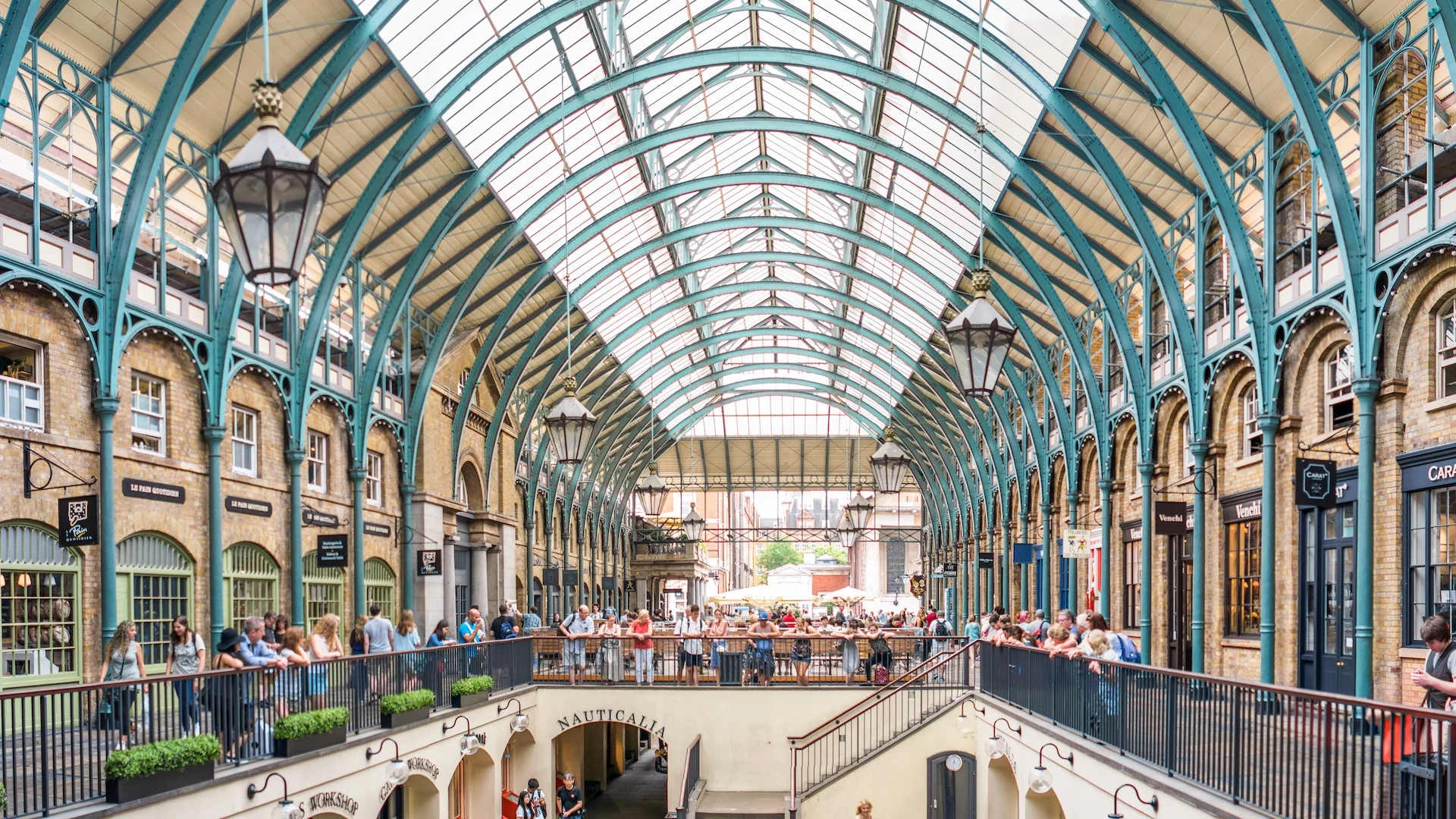
Covent Garden
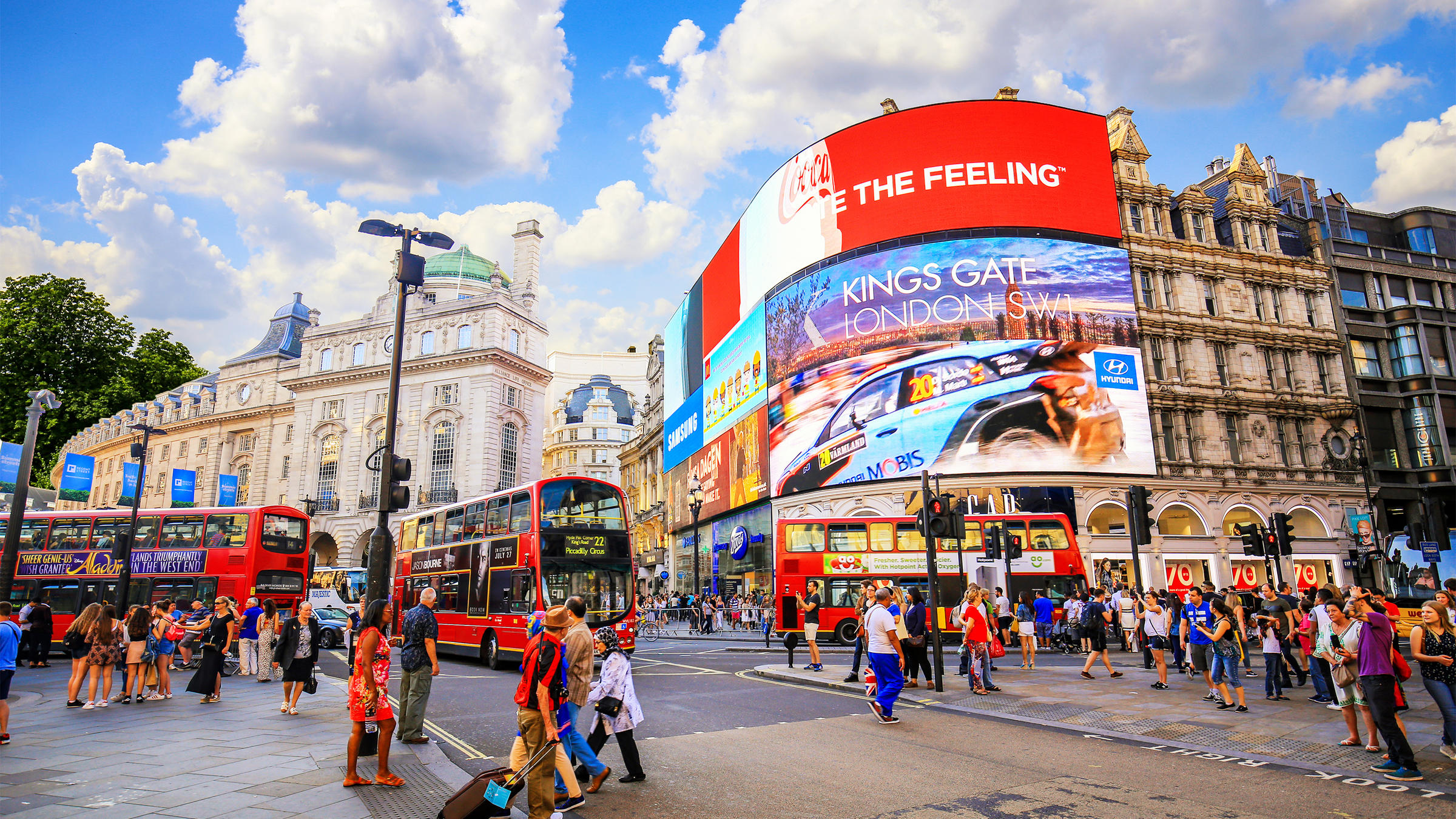
Piccadilly Circus
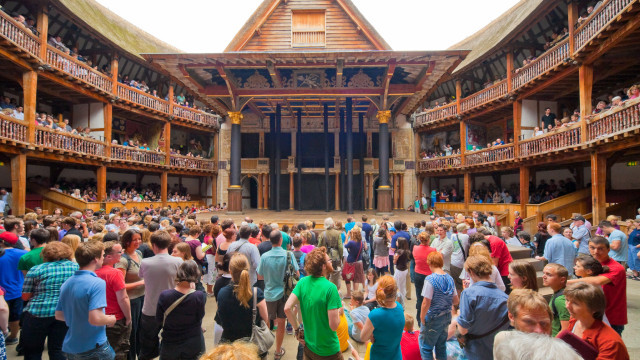
Shakespeare’s Globe

Hyde Park
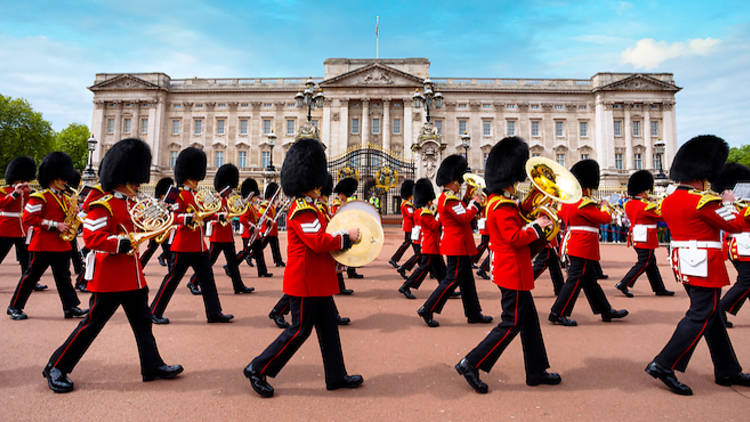
Changing of the Guard
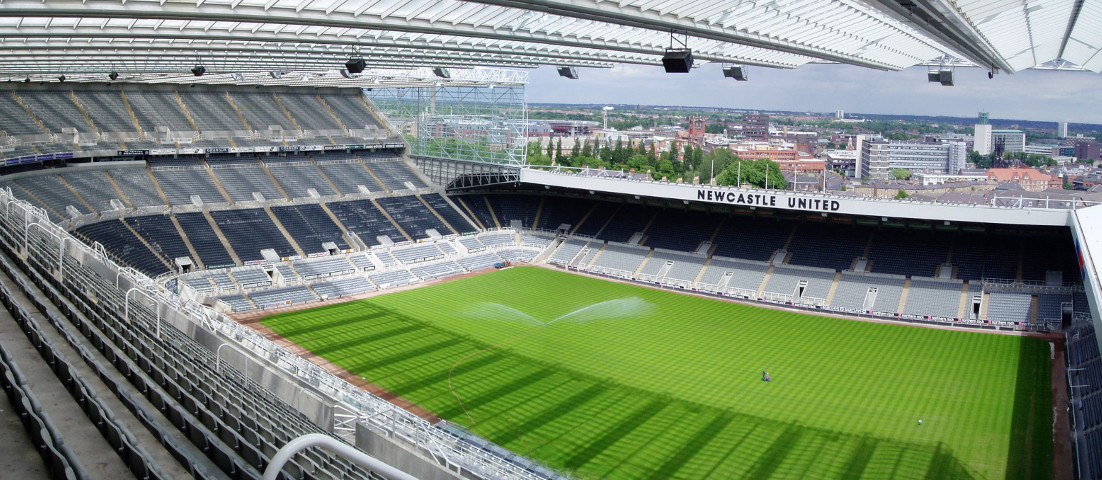
St. James’s Park
One of London’s eight Royal Parks, St. James’s Park is a verdant jewel located right in the center of town. Flanked by Buckingham Palace, Green Park, and St. James’s Palace, the green space stretches across almost 57 acres (23 hectares). It’s renowned for its pretty lake, vibrant flower beds, and for hosting several regal events.
Situated within Windsor Castle, this 15th-century church is a stunning example of the Perpendicular Gothic style, with its slender pillars, and pinnacles all soaring skyward. Many British royals—including monarchs such as Henry VIII and Charles I—are buried here and it’s also where Prince Harry married Meghan Markle in 2018.
Founded in 1753, the British Museum is London‘s largest and most visited museum. Its gigantic permanent collection includes over 8 million historical artifacts, with everything from ancient Egyptian hieroglyphs and mummies to Roman treasures. A veritable temple of history and culture, the museum is best known for its Ancient Greek sculptures, the world-famous Rosetta Stone, and the 12th-century Lewis chessmen.
One of the most charming villages in the Cotswolds, quaint Bibury offers respite from the bustle of London and Oxford. Stroll along the banks of River Coln, explore the historic buildings—including the 14th-century weavers cottages of Arlington Row—and visit natural attractions such as Rack Isle, a water meadow filled with plants.
A branch of the acclaimed Imperial War Museum, the Churchill War Rooms are set in the secret wartime bunker from which the cigar-puffing Prime Minister of Britain, Winston Churchill, directed the country’s war efforts. Situated beneath street level in London’s Westminster district, the Cabinet War Rooms were constructed shortly before the outbreak of World War II. Little has changed within them since the war came to a close in 1945, though these days, the underground complex functions as a museum, documenting the workings of the United Kingdom’s wartime government.
With a prime location on the south bank of the River Thames, looking out across London Bridge, Southwark Cathedral is one of central London’s oldest churches, dating back to the 12th century. Its official name is the Cathedral and Collegiate Church of St. Saviour and St. Mary Overie.
The Peak District became Britain’s first national park in 1951 and remains one of its most popular outdoor destinations. From fertile farmland and stately homes to towering peaks and underground caves, there’s much to explore across the 143,700-hectare park, including the beginning of Britain’s best-known trail, the Pennine Way.
How to get around in England
What are the best How to Get Around in England?
The best How to Get Around in England according to Viator travelers are:
What How to Get Around in England are 1 hour or less?
How to Get Around in England that are 1 hour or less are:
What How to Get Around in England are taking additional safety precautions?
These England experiences are providing additional COVID-19 safety measures:
What How to Get Around in England are good for avoiding crowds?
These hidden gems in England may have limited interaction with crowds:
England Historical Tours
What are the best Historical Tours in England?
The best Historical Tours in England according to Viator travelers are:
What Historical Tours in England are taking additional safety precautions?
These England experiences are providing additional COVID-19 safety measures:
What Historical Tours in England are good for avoiding crowds?
These hidden gems in England may have limited interaction with crowds:
- Small-Group Tour: Historical Pub Walking Tour of London
- Warner Bros. Studio Harry Potter Tour with Superior Transport from London
- Small-Group Complete Cotswolds Tour (From London)
- Downton Abbey Village, Blenheim Palace and Cotswolds Day Trip from London
- Westminster Abbey Tour and optional visit to Houses of Parliament in London
England Culture Tours
What are the best Culture in England?
The best Culture in England according to Viator travelers are:
What Culture in England are 1 hour or less?
Culture in England that are 1 hour or less are:
What Culture in England are taking additional safety precautions?
These England experiences are providing additional COVID-19 safety measures:
What Culture in England are good for avoiding crowds?
These hidden gems in England may have limited interaction with crowds:
Museums in England
What are the best Museums in England?
The best Museums in England according to Viator travelers are:
What Museums in England are taking additional safety precautions?
These England experiences are providing additional COVID-19 safety measures:
What Museums in England are good for avoiding crowds?
These hidden gems in England may have limited interaction with crowds:
- The British Museum London Guided Museum Tour – Semi-Private 8ppl Max
- Warner Bros. Studio Harry Potter Tour with Superior Transport from London
- The Postal Museum Admission Ticket
Art Galleries in England
What are the best Art Galleries in England?
The best Art Galleries in England according to Viator travelers are:
What Art Galleries in England are taking additional safety precautions?
These England experiences are providing additional COVID-19 safety measures:
- The Beatles Story Experience Ticket
- London : Family and Children Tour of the National Art Gallery
- Stonehenge, Windsor Castle, and Bath from London
- Stonehenge and Bath Day Trip from London
- Kew Gardens Entrance Ticket
England Arts & Culture Tours
What are the best Art & Culture in England?
The best Art & Culture in England according to Viator travelers are:
What Art & Culture in England are 1 hour or less?
Art & Culture in England that are 1 hour or less are:
What Art & Culture in England are taking additional safety precautions?
These England experiences are providing additional COVID-19 safety measures:
What Art & Culture in England are good for avoiding crowds?
These hidden gems in England may have limited interaction with crowds:
Architecture Tours in England
What are the best Architecture Tours in England?
The best Architecture Tours in England according to Viator travelers are:
What Architecture Tours in England are 1 hour or less?
Architecture Tours in England that are 1 hour or less are:
What Architecture Tours in England are taking additional safety precautions?
These England experiences are providing additional COVID-19 safety measures:
What Architecture Tours in England are good for avoiding crowds?
These hidden gems in England may have limited interaction with crowds:
Food & Drink Tours in England
What are the best Food & Drink in England?
The best Food & Drink in England according to Viator travelers are:
What Food & Drink in England are taking additional safety precautions?
These England experiences are providing additional COVID-19 safety measures:
What Food & Drink in England are good for avoiding crowds?
These hidden gems in England may have limited interaction with crowds:
Attractions & Sightseeing Tours in London, England
Below are Sightseeing Activity Tours & Attractions in London, England. Visit Bars, Pubs and Night Clubs in London, England with our Nightlife Tours which include Wine Tasting, Dining Experiences in some of England’s Finest Restaurants.
Book Hotels, Guest Houses & Villas in London, England
Hotels in London, England are spread around the city within the territory of 17.9 kilometers, while 66 hotels are located directly in the city center. We have 2281 Apartments listed in London, England779 Guest Houses available to Book in London, England and 1935 Hotels listed available for Booking right now.
- Discount Hotels in London, England
- Guest Houses in London, England
- Apartment’s in London, England
- Bed and Breakfast in London, England
- Hostels in London, England
- England Hotels with Restaurant
- Hotels in London , England with Gym
- London, England Hotels with Swimming Pool
- Spa Hotels in London, England
- Pets Allowed Hotels in London, England
Museums and Galleries
The Tate Modern art gallery in London was England’s top tourist attraction in 2018[8]
Unlike other countries, most state-run museums and places of cultural interest in England are free of charge to visit. Museums are an important aspect of English culture, and most cities and towns have a few museums and art galleries. Some of the most visited places are:
- British Museum
- Tate Modern
- National Gallery
- Natural History Museum, London
- Victoria & Albert Museum
- Science Museum, London
- Royal Museums Greenwich
- Tate Britain
- National Railway Museum:
Museum Tours in England
The British Museum
Madame Tussauds Museum
British Motor Museum Entry Ticket in Gaydon
Immerse yourself in the country’s rich automotive history—and come face to face with one of the world’s largest collections of historic British cars—when you visit the British Motor Museum in Warwickshire. Book tickets before you travel, arrive at a time that suits you best, and explore the galleries at your own pace. As you discover the vintage vehicles, you’ll also learn more about the local motor industry and manufacturing history.
Read More about The British Motor Museum
The Postal Museum
Whether you’re a rail enthusiast, traveling with kids, or a lover of underground London, don’t miss the extraordinary narrow-gauge underground railway at the Postal Museum: the Mail Rail. Save time and beat the lines by prebooking Postal Museum tickets with a dedicated time slot for your Mail Rail ride. Then discover the colorful past of Britain’s postal service, featuring everything from an escaped lioness to a 5-wheeler cycle.
Westminster Abbey and Self-Guided Audio Tours in London
With its 700-year-old history and regal associations, the UNESCO-listed Westminster Abbey is one of London’s most popular landmarks—and this package takes all the hassle out of exploring the ever-popular sight. Book tickets before you travel for seamless logistics; upon arrival, have the freedom to explore at your own pace. This package also includes access to five London audio walking tours, available via your smartphone.
Read more about Westminster Abbey Tours in England
Galleries in England
National Gallery in London, England
National Art Gallery
Inspire a love of art in your kids with this family-friendly guided tour through London’s famed National Art Gallery. With this private museum experience designed to encourage collaboration between kids and parents, you can explore the collection with your guide, slow down to really appreciate one or two works of art, and participate in family-friendly interactive activities perfect for fostering a youthful curiosity in the arts.
Read more about Family and Children Tour of the National Art Gallery
Tate Modern Gallery
Discover art in its diverse expressions with Tate Modern Gallery. This tour was created by us using the materials that were kindly provided by Tate Modern. We respect Tate’s guide to copyright and donate 20% from each tour sale to the Tate for caring for the collection and Tate Learning Programme. It includes depictions of artists’ studios as well as abstract works that draw attention to the complex nature of perception. You will listen to curators, conservators, and artists themselves talk about key artworks in this display. The mobile app helps you explore the Tate Modern Gallery with a private audio tour (included). All you need is a mobile phone. Download tours in advance to listen without WIFI. The audio guide on the mobile app is the best way to enjoy the tour at your own pace. The WeGoTrip app is available on the App Store and Google Play and works offline.
Read more about Tate Modern Gallery with Self-Guided Audio Tour
England Historical Tours
What are the best Historical Tours in England?
The best Historical Tours in England according to Viator travelers are:
What Historical Tours in England are taking additional safety precautions?
These England experiences are providing additional COVID-19 safety measures:
What Historical Tours in England are good for avoiding crowds?
These hidden gems in England may have limited interaction with crowds:
- Small-Group Tour: Historical Pub Walking Tour of London
- Warner Bros. Studio Harry Potter Tour with Superior Transport from London
- Small-Group Complete Cotswolds Tour (From London)
- Downton Abbey Village, Blenheim Palace and Cotswolds Day Trip from London
- Westminster Abbey Tour and optional visit to Houses of Parliament in London
Accommodation in London, England, United Kingdom
What hotels in London offer an especially good breakfast?
For hotels in London that serve up a highly-rated breakfast, try 41, The Lanesborough, Oetker Collection and The Ritz London
How much is a hotel in London, England for this weekend?
The average price per night for a 3-star hotel in London this weekend is £207 or, for a 4-star hotel, £255. Looking for something even fancier? 5-star hotels in London for this weekend cost on average around £558 per night (based on Booking.com prices).
How much is a hotel in London for tonight?
On average, it costs £173 per night to book a 3-star hotel in London for tonight. You’ll pay on average around £231 if you choose to stay in a 4-star hotel tonight, while a 5-star hotel in London will cost around £539 (based on Booking.com prices).
What hotels in London have nice views?
Shangri-La The Shard, London, Royal Lancaster Londonand The Lanesborough, Oetker Collection have received great reviews from travellers in London regarding the views from their hotel rooms.
What hotels in London are good for couples?
These hotels in London are highly rated by couples: 41, The Beaumont Hotel and Bankside Hotel, Autograph Collection.
How much does it cost to stay in a hotel in London?
On average, 3-star hotels in London cost £91 per night, and 4-star hotels in London are £117 per night. If you’re looking for something really special, a 5-star hotel in London can on average be found for £199 per night (based on Booking.com prices).
What are the best hotels to stay in London?
Pan Pacific London, Vintry & Mercer and The Savoy are some of the popular hotels in London.
What are the best hotels in London near The Shard?
Some of the best hotels in London near The Shard include Shangri-La The Shard, London, Cheval Three Quays at The Tower of London and Vintry & Mercer.
What are the best hotels in London near London Gatwick Airport?
Travellers who stayed in London near London Gatwick Airport (LGW) have said good things about Sofitel London Gatwick, Bloc Hotel London Gatwick Airport and Hampton by Hilton London Gatwick Airport.
Which hotels in London, England are good for families?
Many families visiting London loved staying at 41, The Connaught and Claridge’s.
Book Hotels & Guest Houses in England
Hotels in the United Kingdom are spread around the State within the territory of 17.9 kilometers, while 66 hotels are located directly in the city center. Hotels in the United Kingdom are available for Booking right now.
- The Cleveland
- London Budget Guesthouse
- The Honely Hotel – Blackpool
- Hotel Avano – Blackpool Pleasure Beach
- Paddington Park Hotel
- YHA Liverpool Central
- The Alan – Manchester City Center
- The Churchill Hotel – York City Center
- Park Grand – Kensington London
- Jorvik House – York
Hotels in the United Kingdom by Country
We have listed Hotels in United Kingdom by Country, select a country to view the latest Hotel Deals.
Hotels in England by County
We have listed Hotels in the UK by County, select a county in the United Kingdom to view the latest Hotel Deals
- Avon
- Bedfordshire
- Berkshire
- Buckinghamshire
- Cambridgeshire
- Cheshire
- Cornwall
- Cumbria
- Derbyshire
- Devon
- Dorset
- Durham
- Essex
- Gloucestershire
- Greater London
- Hampshire
- Herefordshire
- Hertfordshire
- Isle of Wight
- Kent
- Lancashire
- Leicestershire
- Lincolnshire
- Merseyside
- Norfolk
- Northamptonshire
- Northumberland
- Nottinghamshire
- Oxfordshire
- Rutland
- Shropshire
- Somerset
- Staffordshire
- Suffolk
- Surrey
- Sussex
- Tyne and Wear
- Warwickshire
- West Midlands
- Wiltshire
- Worcestershire
- Yorkshire
Hotels in England by Hotel Name
We have listed Hotels in the United Kingdom by Hotel Name, select a hotel in the UK to view the latest Deals.
- The Cleveland
- London Budget Guesthouse
- The Honely Hotel – Blackpool
- Hotel Avano – Blackpool Pleasure Beach
- Paddington Park Hotel
- YHA Liverpool Central
- The Alan – Manchester City Center
- The Churchill Hotel – York City Center
- Park Grand – Kensington London
- Jorvik House – York
England Culture Tours
What are the best Culture in England?
The best Culture in England according to Viator travelers are:
What Culture in England are 1 hour or less?
Culture in England that are 1 hour or less are:
What Culture in England are taking additional safety precautions?
These England experiences are providing additional COVID-19 safety measures:
What Culture in England are good for avoiding crowds?
These hidden gems in England may have limited interaction with crowds:
Art Galleries in England
What are the best Art Galleries in England?
The best Art Galleries in England according to Viator travelers are:
What Art Galleries in England are taking additional safety precautions?
These England experiences are providing additional COVID-19 safety measures:
- The Beatles Story Experience Ticket
- London : Family and Children Tour of the National Art Gallery
- Stonehenge, Windsor Castle, and Bath from London
- Stonehenge and Bath Day Trip from London
- Kew Gardens Entrance Ticket
England Arts & Culture Tours
What are the best Art & Culture in England?
The best Art & Culture in England according to Viator travelers are:
What Art & Culture in England are 1 hour or less?
Art & Culture in England that are 1 hour or less are:
What Art & Culture in England are taking additional safety precautions?
These England experiences are providing additional COVID-19 safety measures:
What Art & Culture in England are good for avoiding crowds?
These hidden gems in England may have limited interaction with crowds:
Architecture Tours in England
What are the best Architecture Tours in England?
The best Architecture Tours in England according to Viator travelers are:
What Architecture Tours in England are 1 hour or less?
Architecture Tours in England that are 1 hour or less are:
What Architecture Tours in England are taking additional safety precautions?
These England experiences are providing additional COVID-19 safety measures:
What Architecture Tours in England are good for avoiding crowds?
These hidden gems in England may have limited interaction with crowds:
- Private Tour: Night Photography Tour in London
- Private Tour, Entry to Westminster Abbey and London Highlights
- Paris Rail Day Trip from London
- The Tate Modern London Guided Museum Tour – Semi-Private 8ppl Max
- Warner Bros. Studio Harry Potter Tour with Superior Transport from London
Museums in England
What are the best Museums in England?
The best Museums in England according to Viator travelers are:
What Museums in England are taking additional safety precautions?
These England experiences are providing additional COVID-19 safety measures:
What Museums in England are good for avoiding crowds?
These hidden gems in England may have limited interaction with crowds:
- The British Museum London Guided Museum Tour – Semi-Private 8ppl Max
- Warner Bros. Studio Harry Potter Tour with Superior Transport from London
- The Postal Museum Admission Ticket
England Tourism
Are you looking for a place to explore and experience something new? England is the perfect destination for you! From its stunning national parks and Areas of Outstanding Natural Beauty (AONB) to its rich history and culture, England has something for everyone.Discover the beauty of England and all it has to offer. From the bustling cities to the quaint countryside, England is a place of wonder and exploration. Whether you’re looking for a relaxing getaway or an adventure-filled holiday, England has something for you.
Interest: Discover the beauty of England and all it has to offer. From the bustling cities to the quaint countryside, England is a place of wonder and exploration.
Desire: Whether you’re looking for a relaxing getaway or an adventure-filled holiday, England has something for you.
Action: Read on to learn more about England and why it should be your next destination.
Conclusion
England is a great destination for a variety of reasons. From its stunning national parks and Areas of Outstanding Natural Beauty (AONB) to its rich history and culture, England has something for everyone. Whether you’re looking for a relaxing getaway or an adventure-filled holiday, England has something for you.

